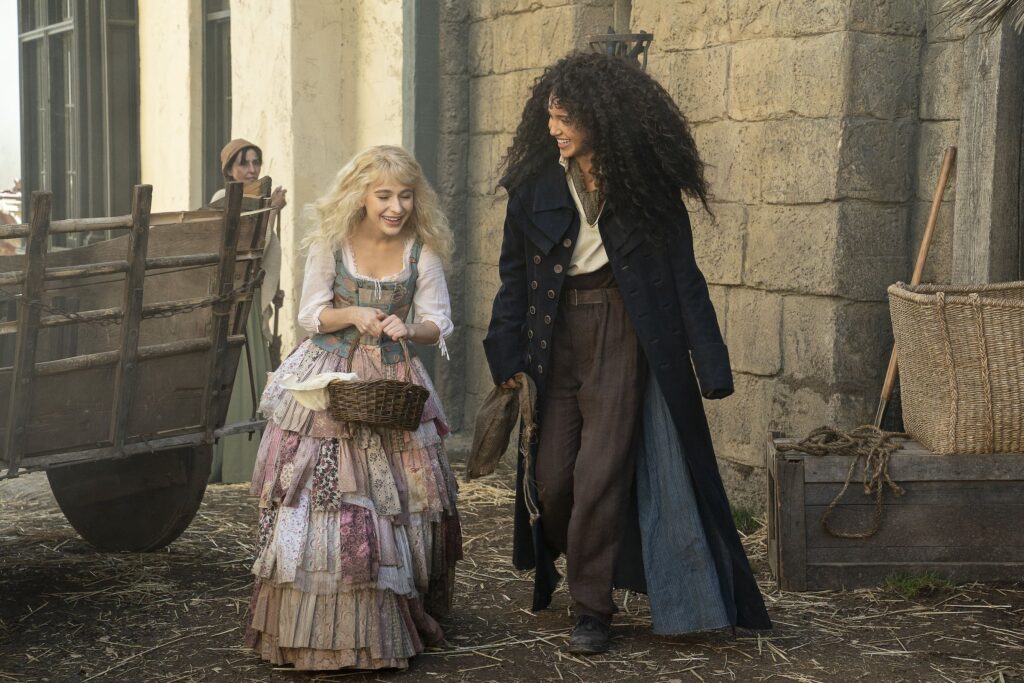So long as there are literate young people trudging their way to school every morning, there’s always going to be an appetite for stories asking “what if the educational system, but magical?” That’s exactly the question author Soman Chainani’s The School for Good and Evil and Netflix’s new adaptation of the novel pose. Like all of the books in Chainani’s fairy tale-inspired YA series, Netflix’s The School for Good and Evil both pulls deep from and pokes fun at the magical storybook canon with a tale about the many different forms love can take.
Netflix’s The School for Good and Evil from director Paul Feig tells the story of Agatha (Sofia Wylie) and Sophie (Sophia Anne Caruso), two best friends who, despite being slightly different flavors of misfit, cling to each other fiercely as they live out their days in the small, sleepy town of Gavaldon. Most of Gavaldon’s townsfolk are content to endlessly toil away at their jobs, never thinking too much about how no one ever seems to wander beyond the thick woods surrounding the picturesque village they call home. But for Sophie and Agatha, avid readers who frequent the local book store run by Mrs. Deauville (Patti LuPone), there’s an undeniable appeal to the idea of one day journeying into and beyond the woods if only to see for themselves what’s out there.
Though Agatha and Sophie’s shared love of books is yet another thing that their peers look down on them for, it’s also what puts them on the path toward adventure when one of them makes a heartfelt wish not knowing that the School for Good and Evil is always listening.
Netflix’s The School for Good and Evil doesn’t deviate all that largely from the source material, but co-writers Feig and David Magee’s script does feature a handful updates that make the story pop a little bit differently. Most everyone in the Gavaldon of Chainani’s book is generally aware of the existence of magic and how two children from the town seem to disappear under mysterious circumstances every four years. But Agatha and Sophie have no idea what they’re getting into in Netflix’s film when they end up in the Endless Woods one evening and are accosted by an otherworldly monster that carries them off into the night sky.
Many of The School for Good and Evil’s core ideas and plot points will ring more than familiar to anyone who’s picked up a novel about kids enrolling in a magic school, which is likely why Netflix’s movie takes care to gloss over a number of the book’s narrative beats that might make it feel too similar to other YA fantasy franchises. Rather than hammering home what all the School for Good and Evil is from the jump, the film instead tries to impress it upon you with one of its many surprisingly majestic, VFX-heavy sequences that gives you a bird’s-eye view of the institution on the first day of student orientation.
It’s as Agatha, Sophie, and all their new classmates are falling out of the sky into either the School for Good or the School for Evil that The School for Good and Evil starts to feel like it’s genuinely having fun before its story takes an inevitable dark turn. But it’s when the film’s curiously stacked cast of pitch hitters all start to show up in a series of resplendent gowns and suits that you can really see how intent Netflix is on The School for Good and Evil appealing to a broad audience.
Wylie and Caruso are both compelling and magnetic presences on screen as they become fast friends (and enemies) with the children of legendary fairytale heroes and villains. But it’s the slightly unhinged camp of Kerry Washington’s Professor Dovey, Charlize Theron’s Lady Lesso, and Michelle Yeoh’s Professor Anemone that end up stealing the show and selling The School for Good and Evil as a kind of meta-fairy tale about how stifling fairytales tend to be.
While the movie does still largely focus on Sophie’s dismay at being assigned to the School for Evil and Agatha’s trouble fitting in with her uber-feminine roommates in the School for Good, it also takes the time to dig into how much of their education’s being influenced by their teachers’ rivalries. Again, the concept of a magical school’s magical teachers having magical beef with one another isn’t exactly new, and the big mystery involving the School for Good and Evil’s headmaster (Laurence Fishburne) is far too easy to piece together. But there is something very special about the way The School for Good and Evil uses Dovey and Agatha — two of its most prominent Black characters — to expand upon some of the more interesting ideas from Chainani’s book about how we define “goodness” and what kind of people we associate it with.
The School for Good and Evil’s twists probably won’t throw you for all that much of a loop, and its selection of dramatic covers tend to take away more than they add to its legitimately solid action sequences. But even though the movie was clearly made with fans of the books in mind, and it runs just a little too long to be a casual watch, it’s exactly the kind of well-produced, feature-length original project you want to see from Netflix that definitely leaves open the possibility for more installments down the line.
The School for Good and Evil also stars Kit Young, Peter Serafinowicz, Cate Blanchett, Rob Delaney, and Rachel Bloom. The film hits Netflix on October 19th.

